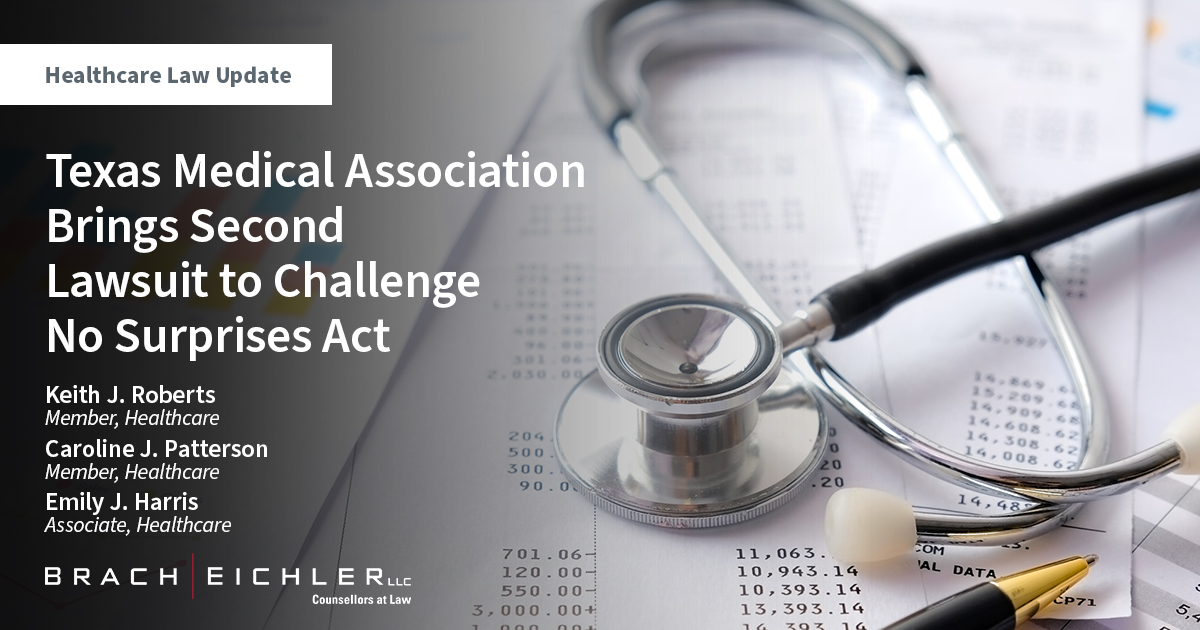Texas Medical Association Brings Second Lawsuit to Challenge No Surprises Act

January 31, 2023
On December 20, 2022, the U.S. District Court for the Eastern District of Texas heard arguments in the Texas Medical Association’s (TMA) second lawsuit challenging the Federal No Surprises Act. The TMA argued that the implementation of certain provisions in the final rule which implemented the No Surprises Act provided an unfair advantage to insurers and deprived physicians of the fair and impartial arbitration process that the No Surprises Act was meant to ensure.
More specifically, TMA’s lawsuit focuses on how the final rule requires arbitrators to first consider the qualifying payment amount (QPA) when determining the proper rate of reimbursement in a payment dispute. The QPA is meant to represent the median in-network rate under the law. However, TMA noted that because QPA is calculated by the insurer, the starting point in payment disputes is skewed in favor of the insurer. TMA’s lawsuit outlined four ways in which insurers’ calculation of QPA allows for deflated rates of reimbursement:
1. Insurers are permitted to include “ghost rates” in their QPA calculations, meaning insurers can include the contract rates of physicians who might not provide the health service in question. Some ghost rates can be as low as $1, which is not reflective of the market rate.
2. Insurers are permitted to include the rates of physicians who are not in the same or similar specialty as those physicians involved in the payment dispute.













